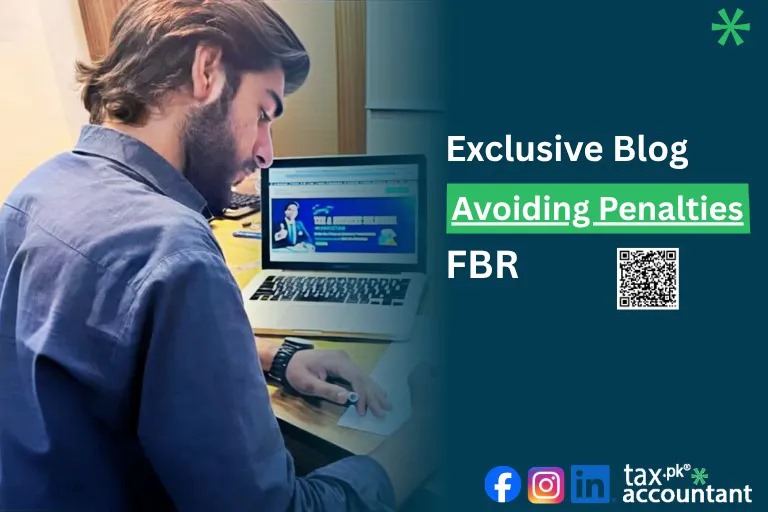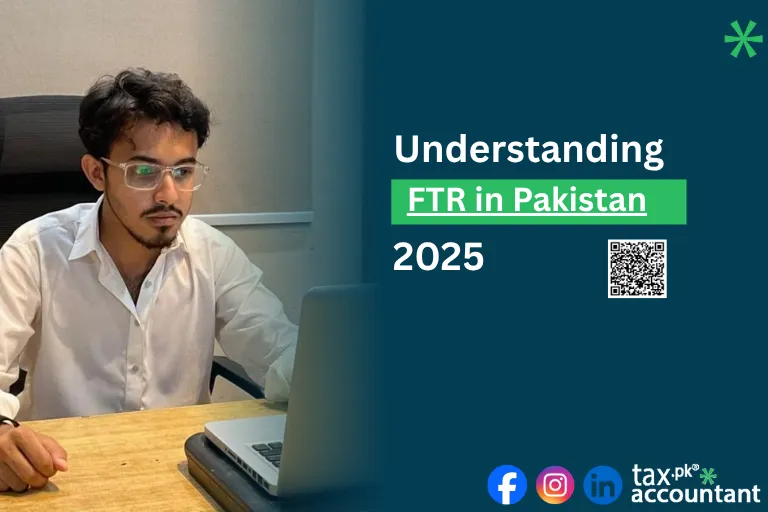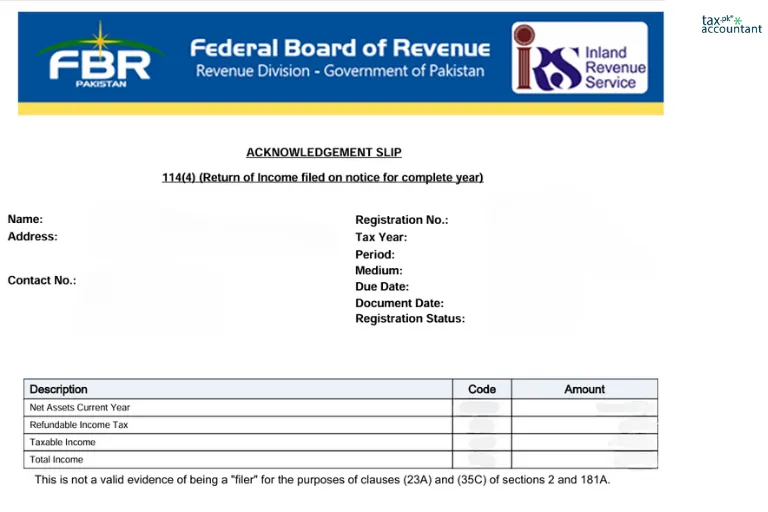Delay in submission of Off-site Monitoring Questionnaire and implementation regarding provisions of Anti Money Laundering Act, 2010 (AMLA, 2010) read with SRO 924(I)/2020 and 950(I)/2020
Dear DNFBP,
Whereas, a questionnaire was sent to you for timely submission under the AMLA, 2010 but you failed to submit the same despite reminders. You are hereby provided the last opportunity to submit the same within 03 days of this notice.
Any default may draw you to the high risk and sanctions may be imposed immediately. Following contravention has been made by you:
(i) Failure to get registered as DNFBP
(ii) Delay in submission of Offsite Monitoring Questionnaire
(iii) Non-implementation of rules and regulations issued vide SRO-924(I)/2020
You are hereby warned to implement all the legal provisions/obligations as mentioned in AMLA, 2010 read with SRO 924(I)/2020. In future, your compliance will be checked through on-site inspections by our inspection teams against the aforementioned legal provisions at your business premises. Any default may entail imposition of sanctions as mentioned in SRO-950(I)/2020. FBR website has ample and ready material available to guide you at each and every step. In case of further query, the office of the undersigned may be contacted during office hours or on 051-9107099, on email help.dnfbp.fbr@gmail.com and may visit the undersigned.
Thanking for your cooperation.
What to Do If You Receive a Notice to Impose Sanctions for Noncompliance with AML/CFT Obligations under AMLA, 2010
Receiving a notice from the Federal Board of Revenue (FBR) or any regulatory authority regarding noncompliance with Anti-Money Laundering (AML) and Counter Financing of Terrorism (CFT) obligations under the Anti-Money Laundering Act, 2010 (AMLA, 2010) can be alarming for any business, especially for Designated Non-Financial Businesses and Professions (DNFBPs). In this blog guide explains the legal context, your obligations, the types of sanctions you may face, and—most importantly—the practical steps to take immediately upon receiving such a notice.
Understanding the Legal Framework
AMLA, 2010: Purpose and Scope
The AMLA, 2010 was enacted to prevent money laundering, combat terrorist financing, and enable the forfeiture of assets derived from such activities. Its scope extends to a wide range of entities, including DNFBPs such as real estate agents, dealers in precious metals and stones, and certain accountants25. The law is aligned with international standards, especially as Pakistan is a member of the Asia/Pacific Group on Money Laundering (APG).
Key Regulatory Authorities
-
Federal Board of Revenue (FBR): Regulates DNFBPs for AML/CFT compliance and has the authority to impose sanctions for violations.
-
Self-Regulatory Bodies (SRBs): ICAP and ICMAP supervise their member accountants under AMLA.
-
Other Agencies: FIA, NAB, and ANF are empowered to investigate and prosecute AMLA violations.
Types of Noncompliance and Associated Risks
Common Violations Noted in Regulatory Notices:
-
Failure to get registered as a DNFBP.
-
Delay in submission of Off-site Monitoring Questionnaire.
-
Non-implementation of rules and regulations issued under SROs (Statutory Regulatory Orders).
Risks of Noncompliance:
-
Classification as a high-risk entity.
-
Imposition of monetary and administrative sanctions.
-
Potential criminal liability for directors, officers, and employees
Types of Sanctions Under AMLA, 2010
| Sanction Type |
Description |
Legal Reference |
| Monetary Penalties |
Fines up to PKR 25 million for individuals, up to PKR 100 million for legal persons |
AMLA, 2010, Section 44 |
| Administrative Penalties |
Suspension or revocation of business licenses, restrictions on operations |
AML/CFT Sanction Rules, 202036 |
| Criminal Sanctions |
Rigorous imprisonment (1–10 years), forfeiture of property |
AMLA, 2010, Section 44 |
| Other Sanctions |
Written warnings, public naming, enhanced scrutiny |
AML/CFT Sanction Rules, 20203 |
Immediate Steps to Take Upon Receiving a Notice
1. Review the Notice Thoroughly
-
Read the notice carefully to identify the specific violations cited (e.g., delayed submission, non-registration, or non-implementation of regulations)16.
-
Note the deadline for response—typically, you are given a final opportunity to comply within a specified period (often 3 days)1.
2. Assess Your Compliance Status
-
Conduct an internal review to determine the root cause of noncompliance.
-
Identify gaps in your AML/CFT program, including policies, procedures, and documentation67.
3. Develop and Implement an Action Plan
-
Address deficiencies immediately (e.g., submit the required questionnaire, complete registration, update policies).
-
Assign responsibilities and set internal deadlines to ensure timely compliance.
4. Strengthen Internal Controls
-
Review and enhance your AML/CFT controls, including customer due diligence (CDD), record keeping, and suspicious transaction reporting (STR)56.
-
Provide additional staff training if needed.
5. Document All Actions Taken
-
Maintain detailed records of your review process, corrective actions, and communications with the regulator.
6. Respond Promptly and Professionally
-
Submit the required documents or information within the stipulated timeframe.
-
If clarification is needed, contact the designated authority using the contact details provided in the notice.
7. Seek Professional Advice
-
Consult with legal or compliance experts if you are unsure about any aspect of the notice or your obligations.
8. Prepare for Future Inspections
-
Regulatory authorities may conduct on-site inspections to verify compliance.
-
Ensure all records and procedures are up to date and accessible.
Ongoing Compliance Requirements for DNFBPs
| Requirement |
Description |
| Customer Due Diligence |
Verify the identity of clients and beneficial owners. |
| Risk Assessment |
Identify and mitigate risks associated with money laundering and terrorist financing. |
| Record Keeping |
Maintain detailed records of transactions and client information for at least five years. |
| Suspicious Transaction Reporting |
Report any suspicious transactions to the Financial Monitoring Unit (FMU). |
| Internal Controls |
Establish robust internal policies and procedures to ensure ongoing compliance. |
| Training |
Regularly train staff on AML/CFT requirements and emerging risks. |
| Monitoring |
Continuously monitor transactions and client behavior for unusual or suspicious activity. |
The Process for Imposing Sanctions
-
Issuance of Written Notice: Regulatory authority issues a formal notice outlining the violation and required corrective actions.
-
Opportunity to Respond: The entity is given a chance to address the violations within a specified period.
-
Imposition of Sanctions: If noncompliance persists, monetary or administrative sanctions may be imposed as per AMLA, 2010 and AML/CFT Sanction Rules.
-
Right to Appeal: Entities have the right to appeal against the sanctions imposed, ensuring due process.
Consequences of Continued Noncompliance
-
Escalation of Sanctions: Repeated or willful noncompliance can result in severe penalties, including higher fines, business restrictions, or criminal prosecution46.
-
Reputational Damage: Public naming and shaming can harm your business reputation and relationships with clients and partners.
-
Business Disruption: Suspension or revocation of licenses can halt business operations.
-
Legal Liability: Directors, officers, and employees may face personal liability and imprisonment.
How to Build a Robust AML/CFT Compliance Program
Key Elements:
-
Risk-Based Approach: Tailor your AML/CFT measures to the specific risks faced by your business57.
-
Comprehensive Policies: Develop clear policies covering CDD, record keeping, STR/CTR reporting, and internal controls.
-
Regular Training: Ensure all employees understand their roles and responsibilities.
-
Independent Audit: Conduct periodic independent audits to test the effectiveness of your AML/CFT program.
-
Continuous Improvement: Update your program regularly in response to regulatory changes and emerging risks.
Frequently Asked Questions (FAQs)
Q: What is a DNFBP?
A: DNFBPs are Designated Non-Financial Businesses and Professions, including real estate agents, dealers in precious metals/stones, and certain accountants.
Q: What happens if I ignore the notice?
A: Ignoring the notice can lead to immediate sanctions, higher penalties, and possible criminal charges46.
Q: Can I appeal a sanction?
A: Yes, you have the right to appeal against any sanctions imposed, as per the due process outlined in AMLA, 2010 and AML/CFT Sanction Rules.
Q: Where can I get help?
A: Contact the regulatory authority using the details in the notice, or consult a legal/compliance expert specializing in AML/CFT.
Sample Action Plan Table
| Step |
Responsible Person |
Deadline |
Status |
| Review Notice |
Compliance Officer |
Immediate |
Complete |
| Submit Required Documents |
Admin Manager |
3 days |
In Progress |
| Update AML/CFT Policies |
Compliance Team |
7 days |
Pending |
| Staff Training Session |
HR Department |
10 days |
Pending |
| Internal Audit |
Internal Auditor |
14 days |
Pending |
Conclusion
Receiving a notice for noncompliance with AML/CFT obligations under AMLA, 2010 is a serious matter, but it can be managed effectively by taking prompt, well-documented actions. By understanding your legal obligations, addressing deficiencies, and maintaining a robust compliance program, you can protect your business from sanctions and contribute to the broader fight against financial crime in Pakistan.
Key Takeaway:
Act immediately, document your actions, seek professional advice when needed, and ensure ongoing compliance to avoid future regulatory issues.













